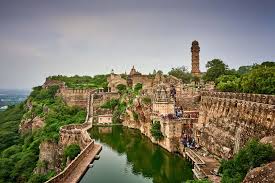Discovering Chittorgarh: A Blend of History and Culture

Introduction
Chittorgarh, a city in Rajasthan, is known for its rich historical significance and cultural heritage. Recognized as a UNESCO World Heritage site, it is home to the stunning Chittorgarh Fort, which stands as a testament to the valor of the Rajput kings. The city attracts thousands of tourists each year, providing not only a glimpse into the past but also emphasizing the importance of preserving historical sites. With its magnificent architecture and storied past, Chittorgarh continues to hold relevance in India’s cultural narrative.
Historical Background
The history of Chittorgarh dates back to the 7th century when it was established as the capital of the Mewar Kingdom. The fort, which covers an area of approximately 700 acres, is believed to be one of the largest in India. It features several palaces, temples, and two prominent water bodies and is known for its heroic tales, including the legendary story of Rani Padmini. The fort has witnessed numerous battles and sieges, reflecting the courage and sacrifice of its rulers. Notably, the fort captures the valiant spirit of Rajputs, making it a symbol of pride for the region.
Cultural Significance
The cultural landscape of Chittorgarh is vibrant, with various festivals and traditions celebrated by the local population. Festivals like the ‘Chittorgarh Fort Festival’ offer a platform for local artisans to showcase their crafts, dance, and music. The city is also renowned for its exquisite traditional crafts, including those of gold and silver jewelry, textiles, and pottery.
Recent Developments and Tourism
In recent years, the Chittorgarh administration has focused on enhancing tourism infrastructure. This involves developing better access roads, improving facilities for visitors, and promoting awareness of the fort’s history. In 2023, the government launched initiatives to stringently maintain the fort and restore some of its ancient structures. These improvements are expected to enhance visitor experiences and increase footfall.
Conclusion
Chittorgarh continues to be a crucial part of India’s historical and cultural tapestry. The efforts to preserve and enhance the city’s heritage underline its significance in presenting an authentic experience of India’s rich past. With tourism on the rise and ongoing preservation efforts, Chittorgarh is set to remain a key destination for history enthusiasts and travelers alike, fostering appreciation for India’s extensive historical narratives. Visitors can look forward to experiencing Chittorgarh’s majestic fort, engaging local traditions, and understanding the stories that shaped this remarkable city.









